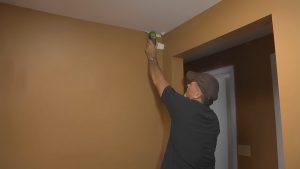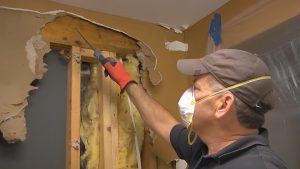Is Ceiling Replacement Required Following a Water Leak?
Dealing with a water leak in your home can be a stressful experience, and one of the most concerning aspects is the potential damage it can cause to your ceiling. The decision to replace a ceiling after a water leak depends on several factors, including the extent of the damage, the type of ceiling material, and the presence of mold or structural issues. In this article, we will discuss these factors and provide guidance on whether you need to replace your ceiling after a water leak.

Factors to Consider When Deciding on Ceiling Replacement
- Extent of Water Damage The extent of the water damage will play a significant role in determining whether a ceiling replacement is necessary. If the leak was caught early and the damage is minimal, you may be able to simply dry the area and repair any cosmetic issues. However, if the water damage is extensive or has weakened the structural integrity of the ceiling, a full replacement may be required.
- Type of Ceiling Material The type of ceiling material will also affect the decision to replace it after a water leak. Drywall and plaster ceilings are porous and can absorb water, making them more susceptible to damage. In these cases, replacement is often necessary if the material is significantly saturated or compromised. On the other hand, materials like metal or plastic may not absorb water, which can make repairs easier and replacement less likely.
- Presence of Mold Mold growth is a common consequence of water leaks and can pose serious health risks if not properly addressed. If mold is present on your ceiling, you may need to replace the affected materials to ensure that the mold is completely removed. In some cases, mold remediation professionals may be able to clean and treat the area without requiring a full replacement.
- Structural Issues Water leaks can cause structural issues in your ceiling, such as sagging or warping. If the integrity of the ceiling has been compromised, it is essential to replace it to ensure the safety of your home and its occupants.
Assessing the Damage and Making a Decision
To determine whether you need to replace your ceiling after a water leak, consider the following steps:
- Inspect the Damage Begin by visually inspecting the affected area to assess the extent of the damage. Look for signs of water staining, discoloration, sagging, or warping. If you can safely access the attic or crawl space above the ceiling, inspect it for water damage as well.
- Test for Moisture Use a moisture meter to test the moisture content of the ceiling materials. If the moisture level is significantly higher than normal, this may indicate that the ceiling needs to be replaced.
- Consult a Professional If you are unsure about the extent of the damage or whether your ceiling needs to be replaced, it’s always a good idea to consult a professional. A licensed contractor or water damage restoration specialist can assess the situation and provide expert guidance on the best course of action.
- Consider Repair Options In some cases, it may be possible to repair the damaged ceiling without a full replacement. This may involve patching and repainting the affected area, or replacing only a portion of the ceiling materials. Discuss these options with a professional to determine the best solution for your situation.

The decision to replace a ceiling after a water leak depends on several factors, including the extent of the damage, the type of ceiling material, and the presence of mold or structural issues. By assessing the damage and consulting a professional like Water Damage Restore 247, you can determine the best course of action to restore your ceiling and protect your home. Remember that addressing water leaks and their consequences promptly is crucial to minimizing damage and potential health risks.
